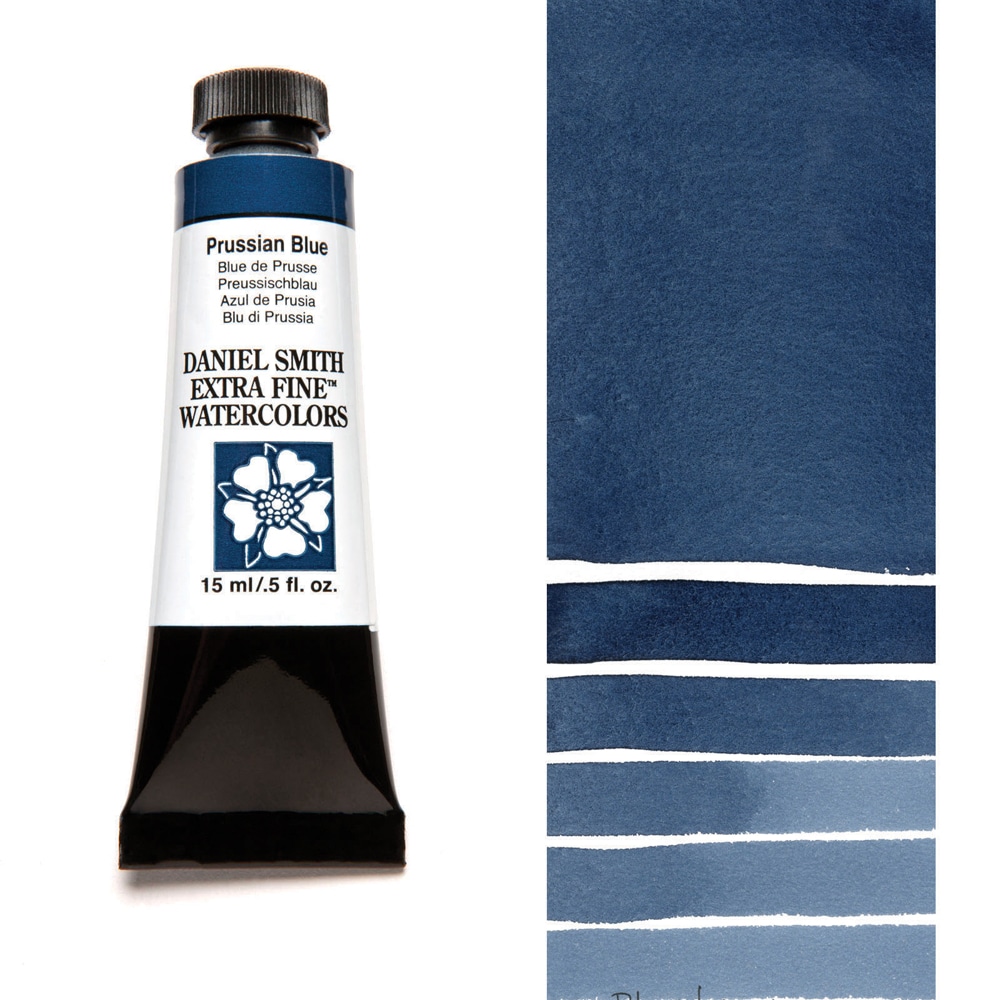Imagine stepping into an art studio, sunlight streaming through a dusty window, and the scent of turpentine hanging in the air. On the easel, a canvas awaits, a blank page beckoning you to unleash your creativity. Your hand reaches for a paintbrush, and there, amidst your palette, lie two tubes, vibrant blue, both promising endless possibilities. These are Prussian blue and phthalo blue, two titans of the blue pigment world, each boasting unique properties and captivating personality. But which one reigns supreme? Choosing between these two can feel like picking between two beloved friends—a daunting decision, filled with intrigue and a touch of artistic trepidation.

Image: allthedifferences.com
This article will delve into the heart of the legendary Prussian blue and phthalo blue rivalry, exploring their histories, characteristics, and applications, empowering you to choose the perfect blue for your next masterpiece. We’ll uncover the secrets behind their unique hues, explore their strengths and weaknesses, and guide you through the fascinating world of blue pigment, so you can unlock the full potential of your artistic vision.
A Journey Through Time: The Tale of Two Blues
Our story begins in the 18th century, when a serendipitous discovery led to the creation of Prussian blue, a pigment that would forever change the landscape of art. A Berlin chemist, Johann Jacob Diesbach, accidentally stumbled upon this remarkable blue while trying to create a vibrant red dye. His experiment, involving a mixture of animal blood, potash, and alum, yielded a stunning dark blue, quickly becoming renowned for its intense color and remarkable durability. Prussian blue graced canvases across Europe, adorning portraits and landscapes with a captivating depth and richness that had never been seen before.
Fast forward to the 20th century, and the world of art embraced another revolutionary blue—phthalo blue. This synthetic pigment, born from the ingenuity of chemists, burst onto the scene in 1935, its captivating intensity and brilliance quickly capturing the hearts of artists. Phthalo blue’s versatility and luminosity, coupled with its steadfast resistance to fading, solidified its position as a contemporary favorite, sparking a creative surge in the art world.
Unveiling the Secrets of Each Blue
To truly appreciate Prussian blue and phthalo blue, we must understand their unique properties. Prussian blue, a complex iron-based pigment, is known for its deep, dark hue, a rich, almost velvety blue reminiscent of a twilight sky. While its color is undeniably captivating, it can appear slightly less vibrant compared to phthalo blue, particularly when mixed with other colors.
Phthalo blue, a phthalocyanine-based pigment, boasts an unparalleled intensity and brilliance, a luminous, almost electric blue that evokes the clear, radiant sky on a summer day. Its vivid hue has made it a popular choice for contemporary artists seeking to add a bold, striking presence to their work.
Clash of the Titans: Exploring Their Differences
Both Prussian blue and phthalo blue are powerful pigments in their own right, but their unique characteristics dictate their suitability for specific applications.

Image: danielsmith.com
Prussian Blue: A Master of Depth and Detail
- Intense and Rich Color: Prussian blue’s deep, dark hue lends itself beautifully to creating atmospheric depth and shadows, adding a sense of realism to paintings. Its velvety richness creates a sense of mystery and intrigue, making it ideal for conveying the subtleties of light and shadow.
- Subtle Color Changes: When mixed with other pigments, Prussian blue often creates color shifts and subtle variations that lend a nuanced aesthetic to paintings. Its slightly cooler tone compared to phthalo blue adds a depth and complexity to mixed colors.
- Mixing Properties: Prussian blue mixes beautifully with other colors, particularly warm browns and reds, and can be used to create a wide range of shades and hues. Its versatility allows artists to create a wide spectrum of blues, from deeper indigo to lighter cerulean.
- Historical Significance: Prussian blue’s rich history in art, its use by renowned artists throughout centuries, imbues it with a certain allure and charm, making it a cherished pigment amongst art lovers and collectors.
Phthalo Blue: The King of Brilliance and Boldness
- Dazzling Intensity and Luminosity: Phthalo blue’s dazzling luminosity, as if capturing the essence of midday sunlight, renders it ideal for creating bold and vibrant paintings. Its intense, almost electric quality adds a sense of energy and dynamism to any creation.
- Versatile Mixing Properties: Phthalo blue blends effortlessly with other pigments, allowing artists to create a stunning array of vibrant hues and shades. It mixes well with both warm and cool colors, offering a wide range of artistic possibilities.
- Exceptional Durability: Phthalo blue’s resistance to fading ensures that your artwork will remain vibrant and beautiful for years to come. Its steadfastness against time makes it a sought-after pigment for paintings intended for long-term preservation.
- Contemporary Appeal: Phthalo blue’s modern origins and brilliant color have solidified its popularity amongst contemporary artists seeking to explore new creative landscapes. Its vibrant hue reflects the creative energy and vibrancy of modern artistic expression.
Prussian Blue Vs Phthalo Blue
The Choice Is Yours – Unveiling Your Creative Potential
Both Prussian blue and phthalo blue are invaluable tools in the artist’s arsenal, each possessing unique characteristics that can enhance and elevate your artistic vision. Whether you desire the subtle nuances of Prussian blue to capture the depth of a forest scene or the brilliant luminosity of phthalo blue to express the joyous energy of a summer day, the choice ultimately lies in your hands. Embrace the power of both, explore their unique qualities, and let your creativity flow freely.
The journey into the world of blues is an ever-evolving adventure, a dance of color and light that embraces both tradition and innovation. Allow yourself to experiment, to discover, and to create. May your next masterpiece be a testament to the captivating magic of blue, the color of boundless possibilities.





